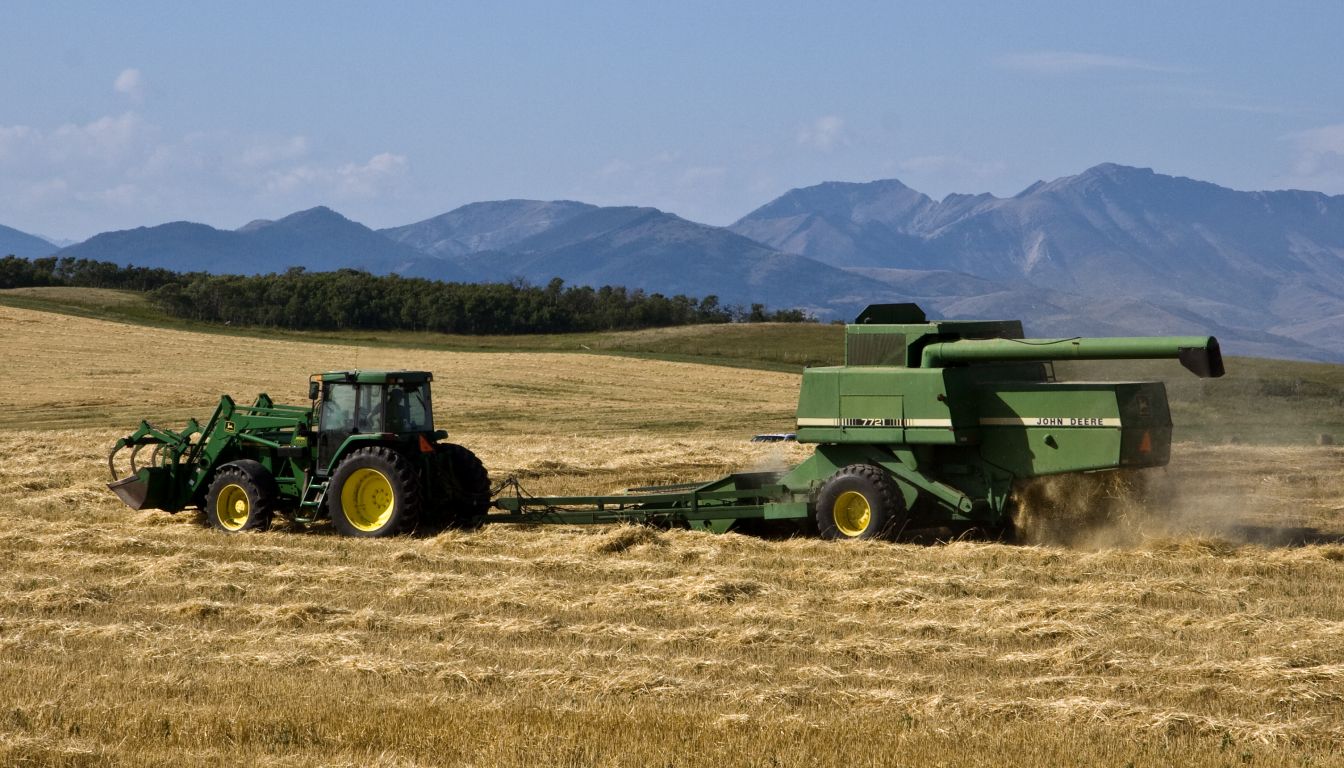Water scarcity has become more and more serious in Alberta. As a result, water-use challenges have emerged among agriculture, municipal, industrial and other water-intensive sectors. Under this background, the study aims at quantifying virtual water flows through the food trade in Alberta.
Alberta is home to 65% of all irrigation in Canada (Statistics Canada, 2007). Irrigation area has increased from 19,223 hectares in 1911 to 495,786 hectares in 2008, with the sharpest increase coming after 1970. The distribution of the irrigation area in Alberta primarily involves the 13 irrigation districts in southern Alberta, representing the largest amount of water allocated for a specific purpose in Alberta at over 3.5 billion m3.
The four largest districts (e.g. Eastern, St. Mary River, Western, and Bow River Irrigation Districts) account for 83% of total diversions, with two more accounting for an additional 12%. Seven remaining small districts account for the other 5%. Irrigation plays an important role in Alberta’s agricultural production. On less than 6% of the cultivated land base in the province, irrigation contributes more than 19% of the gross primary agricultural production.
According to a report of Alberta Environment, as of December 2005, the total water allocation in Alberta was 9.56 Gm3 (1Gm3=109 m3) of water for various purposes (AMEC Earth & Environmental 2007). Of this, 9.25 Gm3 was for surface water and 0.31 million Gm3 was for ground water. The irrigation sector accounts for 43% of the total water allocation. The industrial sector accounts for 28% followed by the municipal (11%), and petroleum (8%). All other sectors combined accounts for 10%.
Agriculture and oil sectors are the two mainstays of the Alberta economy and two large water users. Water is essential for both the growth of agricultural products and the production of the oil sector. Several years of drought have exacerbated a dilemma faced by the province of Alberta for the choices that must be made between conflicting uses of the limited water resources by these two sectors (Gaudet et al. 2006).
Virtual water is the amount of water that is embedded in food or other products needed for its production. To meet the challenge of gaining a better understanding and appreciation of our virtual water resources, the Alberta Water Research Institute commissioned Junguo Liu and Zhao Zeng of the School of Nature Conservation at Beijing Forestry University to:
Wheat, barley and canola are the most dominant crops in Alberta, together account for over three fourths of the total crop production. A GIS-based Environmental Policy Integrated Climate (GEPIC) model was used to quantify the water footprint of these three crops with a spatial resolution of 5 arc-minutes (around 10 km by 10 km, nearby the equator). Results show there is a relatively low water footprint of individual crops in regions with high precipitation or in the irrigation districts. At the provincial level, barley, wheat and canola had a water footprint of 699, 1635 and 2427 m3/ton, respectively.
On average, the virtual water exports of crop and livestock products were estimated to be 16.91 Gm3/year between the period 1999-2008. The average virtual water imports were only 0.85 Gm3/year. This results in average net virtual water exports of 16.06 Gm3/year.
On average, Alberta exported 5,083 m3 of virtual water (per person per year) through net food exports of crop and livestock products. This was almost 2.5 times higher than the average water footprint in Canada. Domestic production of crop and livestock products was mainly used for food exports to other countries. Wheat, beef and canola were the three major products contributing to net virtual water exports, and combined they accounted for over 99% of total net virtual water exports from Alberta.

Within Alberta, there is an increasing demand for water to support a growing economy and population, and to support our environment. In addition, relatively large amounts of water are being used to feed people throughout the world (through the export of food produced here in Alberta). As such, virtual water exports, future water and food trade policies have to be carefully developed, and incent new programs that promote improvement of water use efficiency, and also advance water use efficiency at a global level.
We provide Canadian educational resources on water practices to promote conservation and sustainability. Our team crafts current and relevant content, while encouraging feedback and engagement.
The Canada WaterPortal is a registered charity, #807121876RR0001
We recognize and respect the sovereignty of the Indigenous Peoples and communities on whose land our work takes place.
© 2025 All Rights Reserved.